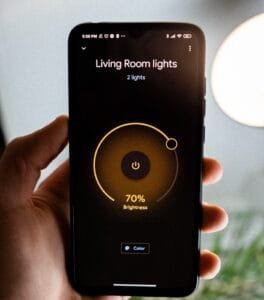Smart Homes: Solutions for a Greener Home

Smart home technology offers energy efficiency, convenience, and the potential to reduce utility expenses.
Here’s how smart homes contribute to energy savings. The available technologies and associated costs. And considerations during power outages.
Embracing smart home technology offers a pathway to a more energy-efficient and convenient lifestyle. By understanding the benefits, available options, and considerations, you can make informed decisions that align with your household needs and sustainability goals.
Energy Savings with Smart Home Technology
Smart home devices are engineered to optimize energy consumption, leading to notable reductions in household energy use. Key contributors include:
- Smart Thermostats: These devices learn your schedule and adjust heating and cooling accordingly, resulting in energy savings of up to 10–15% on heating and cooling bills.
- Smart Lighting: Utilizing LED technology and automation, smart lighting systems can reduce electricity usage by up to 75% compared to traditional incandescent bulbs.
- Smart Appliances: Energy-efficient appliances that can be scheduled or remotely controlled contribute to overall household energy savings.
Collectively, these technologies can lead to an average reduction in energy consumption of 30–40%, depending on usage patterns and home characteristics.
Available Smart Home Technologies
A variety of smart devices are available to enhance home energy efficiency:
- Smart Thermostats: Devices like Nest and Ecobee adjust temperatures based on occupancy and preferences.
- Smart Lighting Systems: Philips Hue and LIFX offer customizable and energy-efficient lighting solutions.
- Smart Plugs and Power Strips: These allow remote control of connected devices, reducing standby power consumption.
- Smart Appliances: Refrigerators, washing machines, and dishwashers with smart capabilities optimize energy use and can be monitored remotely.
Considerations During Power Outages
During power outages, smart home devices reliant on electricity and internet connectivity may become non-operational. To mitigate this:
- Backup Power Solutions: Investing in uninterruptible power supplies (UPS) or generators can keep critical devices running.
- Manual Overrides: Ensure that devices like smart locks and thermostats have manual controls for use during outages.
- Local Control Hubs: Some systems offer local control options that don’t rely solely on cloud services, maintaining functionality during internet disruptions.
Average Costs of Implementing Smart Home Technology
The investment in smart home technology varies based on the extent of automation:
- Basic Systems: Incorporating essential devices like smart bulbs, plugs, and a thermostat can cost between $200 and $1,500.
- Comprehensive Systems: A full-home automation setup, including security systems, appliances, and integrated controls, may range from $5,000 to $15,000.
While the upfront costs can be significant, the long-term energy savings and enhanced convenience often justify the investment.
See: Climate: Ranking the Best Green Moves
